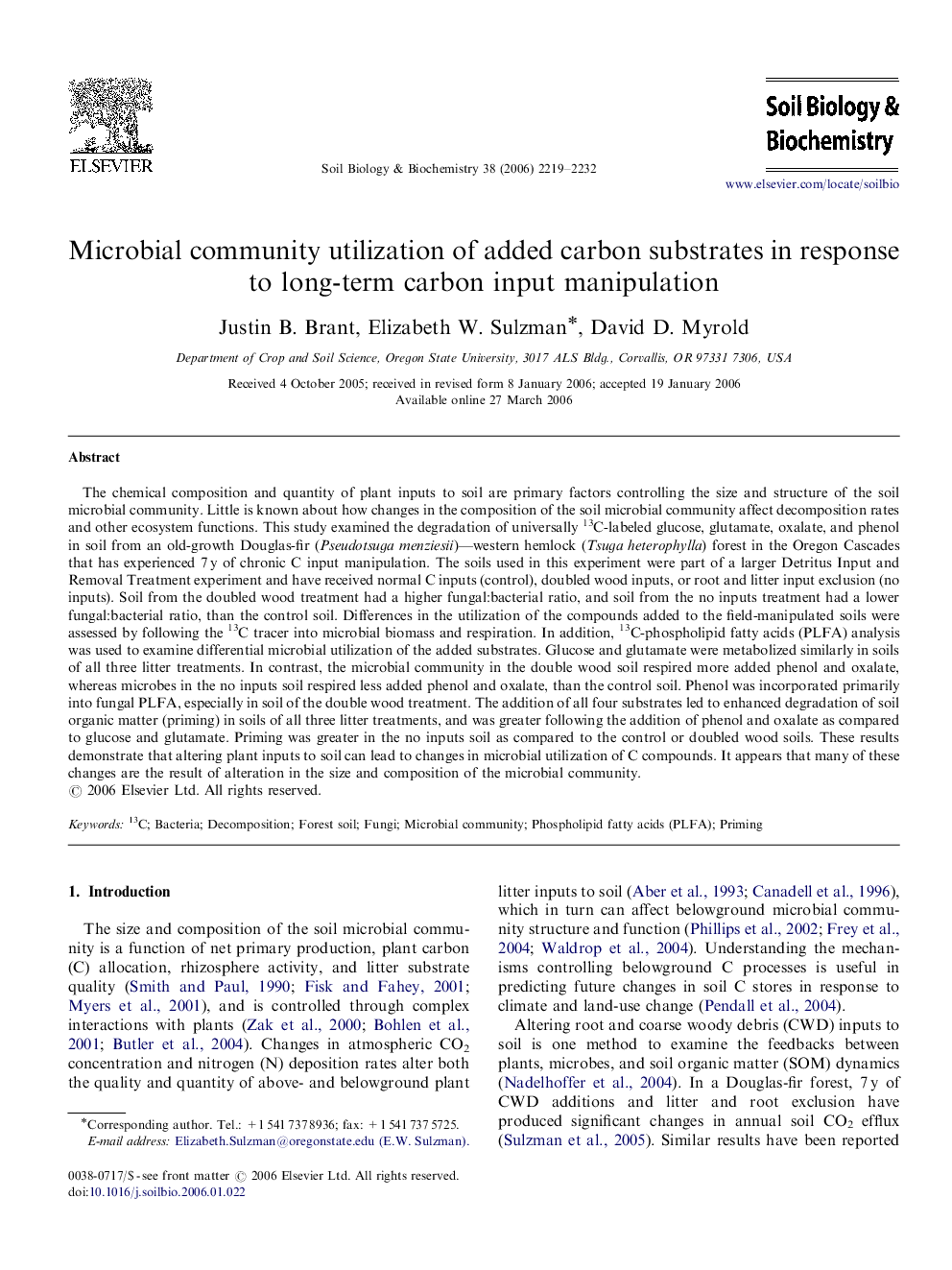| کد مقاله | کد نشریه | سال انتشار | مقاله انگلیسی | نسخه تمام متن |
|---|---|---|---|---|
| 2027188 | 1070097 | 2006 | 14 صفحه PDF | دانلود رایگان |

The chemical composition and quantity of plant inputs to soil are primary factors controlling the size and structure of the soil microbial community. Little is known about how changes in the composition of the soil microbial community affect decomposition rates and other ecosystem functions. This study examined the degradation of universally 13C-labeled glucose, glutamate, oxalate, and phenol in soil from an old-growth Douglas-fir (Pseudotsuga menziesii)—western hemlock (Tsuga heterophylla) forest in the Oregon Cascades that has experienced 7 y of chronic C input manipulation. The soils used in this experiment were part of a larger Detritus Input and Removal Treatment experiment and have received normal C inputs (control), doubled wood inputs, or root and litter input exclusion (no inputs). Soil from the doubled wood treatment had a higher fungal:bacterial ratio, and soil from the no inputs treatment had a lower fungal:bacterial ratio, than the control soil. Differences in the utilization of the compounds added to the field-manipulated soils were assessed by following the 13C tracer into microbial biomass and respiration. In addition, 13C-phospholipid fatty acids (PLFA) analysis was used to examine differential microbial utilization of the added substrates. Glucose and glutamate were metabolized similarly in soils of all three litter treatments. In contrast, the microbial community in the double wood soil respired more added phenol and oxalate, whereas microbes in the no inputs soil respired less added phenol and oxalate, than the control soil. Phenol was incorporated primarily into fungal PLFA, especially in soil of the double wood treatment. The addition of all four substrates led to enhanced degradation of soil organic matter (priming) in soils of all three litter treatments, and was greater following the addition of phenol and oxalate as compared to glucose and glutamate. Priming was greater in the no inputs soil as compared to the control or doubled wood soils. These results demonstrate that altering plant inputs to soil can lead to changes in microbial utilization of C compounds. It appears that many of these changes are the result of alteration in the size and composition of the microbial community.
Journal: Soil Biology and Biochemistry - Volume 38, Issue 8, August 2006, Pages 2219–2232